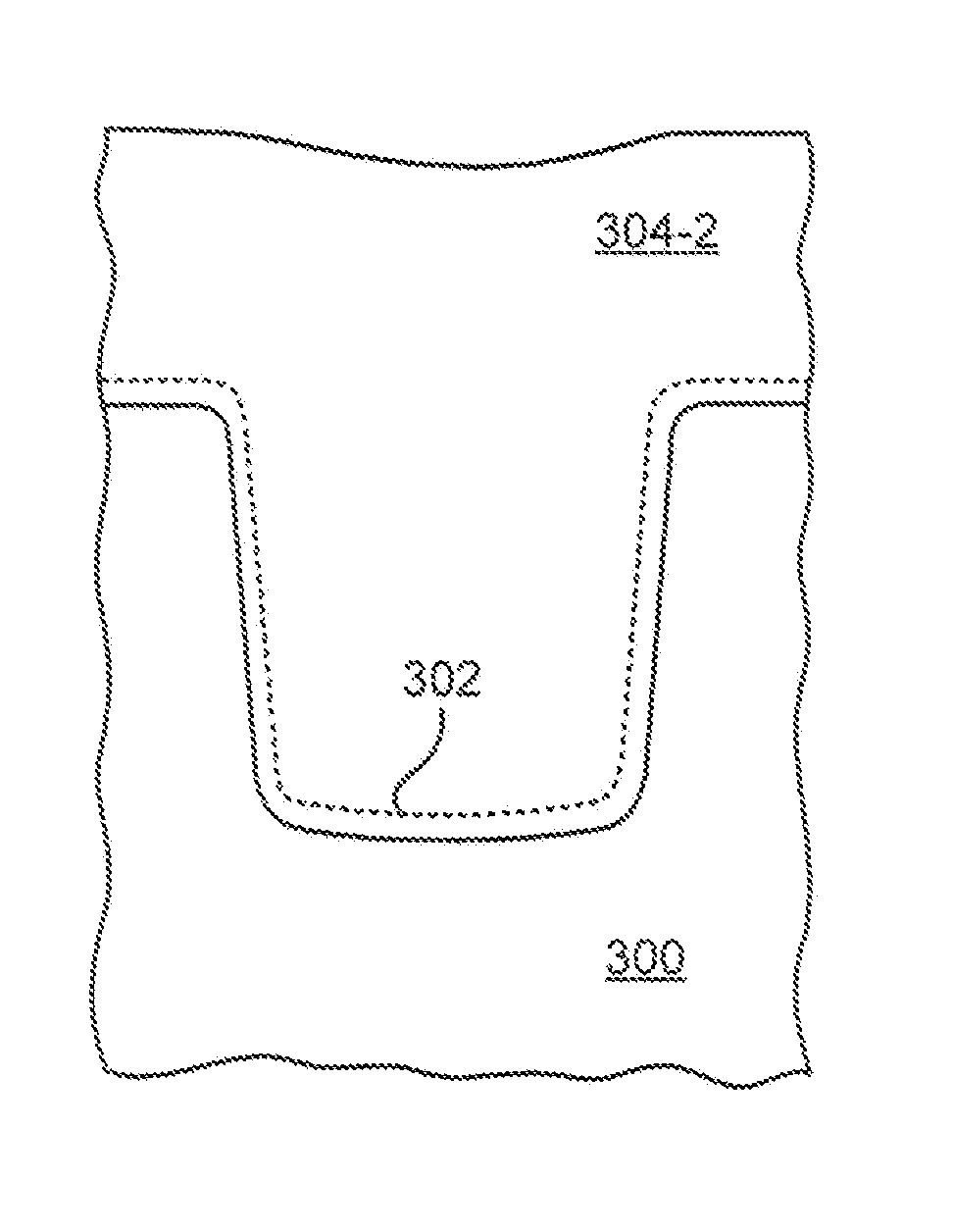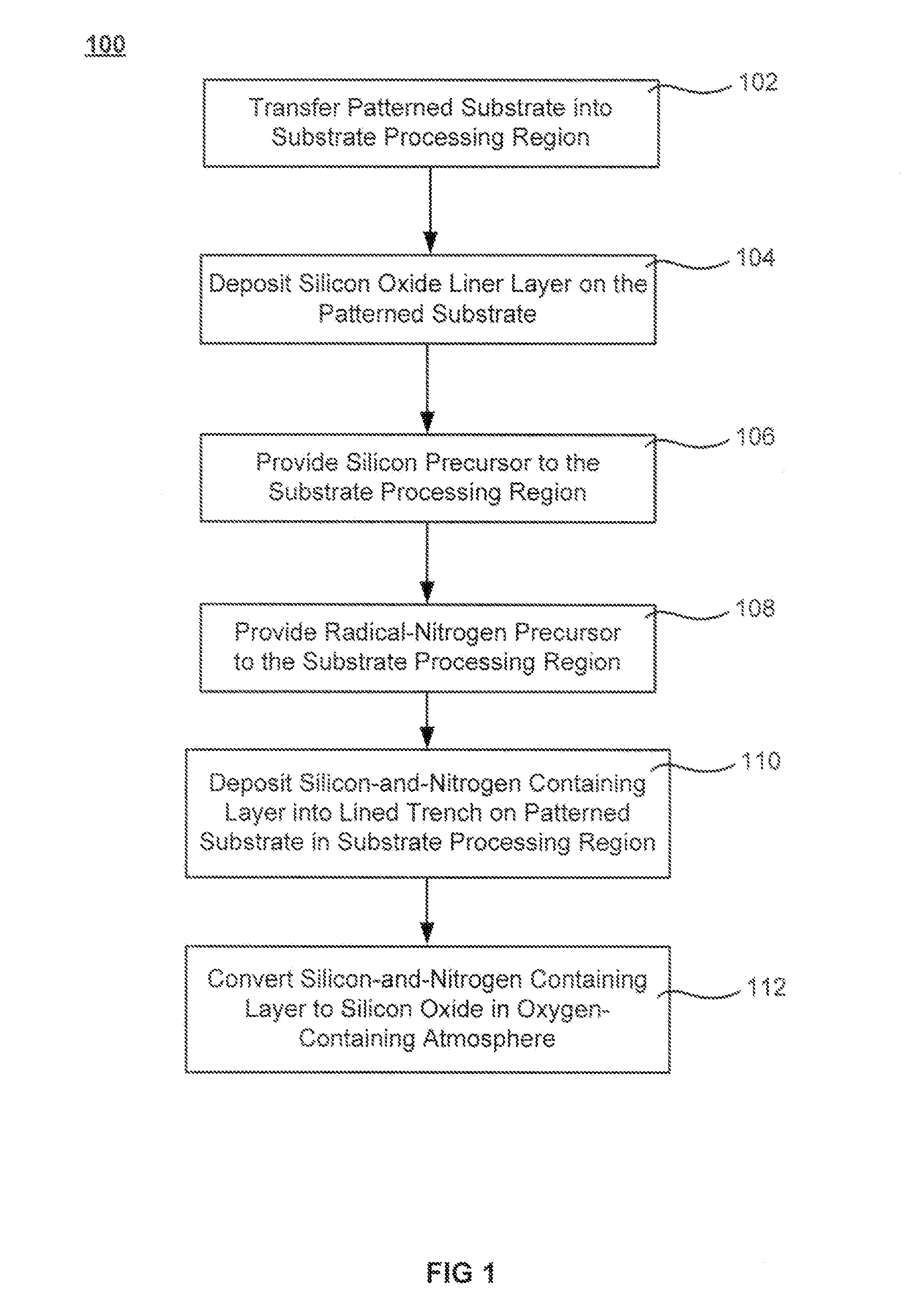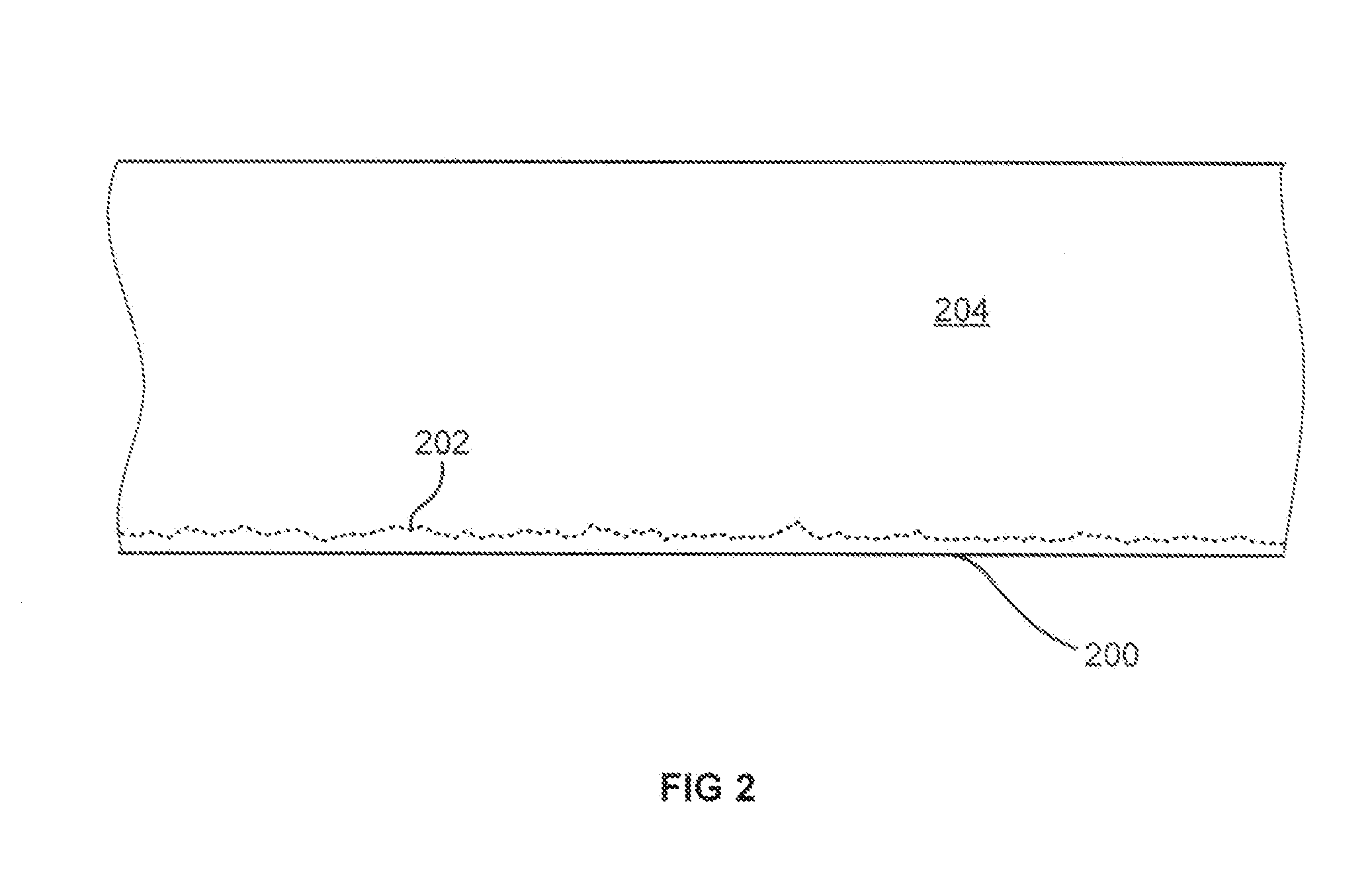Oxide-rich liner layer for flowable CVD gapfill
a technology of cvd gapfill and oxide-rich liner layer, which is applied in the direction of semiconductor devices, electrical equipment, and semiconductor/solid-state device details, etc., can solve the problems of difficult dielectric material filling, dielectric material is prone to voids, and the structural features of the device have decreased spatial dimensions, so as to reduce the volume fraction of voids and increase the deposition rate of the gapfill layer
- Summary
- Abstract
- Description
- Claims
- Application Information
AI Technical Summary
Benefits of technology
Problems solved by technology
Method used
Image
Examples
Embodiment Construction
[0017]The formation of a gap-filling silicon oxide layer with reduced tendency towards cracking is described. The deposition involves the formation of a flowable silicon-containing layer which facilitates the filling of trenches. Subsequent processing at high substrate temperature causes less cracking in the dielectric film than flowable films formed in accordance with methods in the prior art. A compressive liner layer deposited prior to the formation of the gap-filling silicon oxide layer is described and reduces the tendency for the subsequently deposited film to crack. A compressive capping layer deposited after a flowable silicon-containing layer has also been determined to reduce cracking. Compressive liner layers and compressive capping layers can be used alone or in combination to reduce cracking. Compressive capping layers in disclosed embodiments have additionally been determined to enable an underlying layer of silicon nitride to be transformed into a silicon oxide layer....
PUM
| Property | Measurement | Unit |
|---|---|---|
| width | aaaaa | aaaaa |
| feature sizes | aaaaa | aaaaa |
| feature sizes | aaaaa | aaaaa |
Abstract
Description
Claims
Application Information
 Login to View More
Login to View More - R&D
- Intellectual Property
- Life Sciences
- Materials
- Tech Scout
- Unparalleled Data Quality
- Higher Quality Content
- 60% Fewer Hallucinations
Browse by: Latest US Patents, China's latest patents, Technical Efficacy Thesaurus, Application Domain, Technology Topic, Popular Technical Reports.
© 2025 PatSnap. All rights reserved.Legal|Privacy policy|Modern Slavery Act Transparency Statement|Sitemap|About US| Contact US: help@patsnap.com



